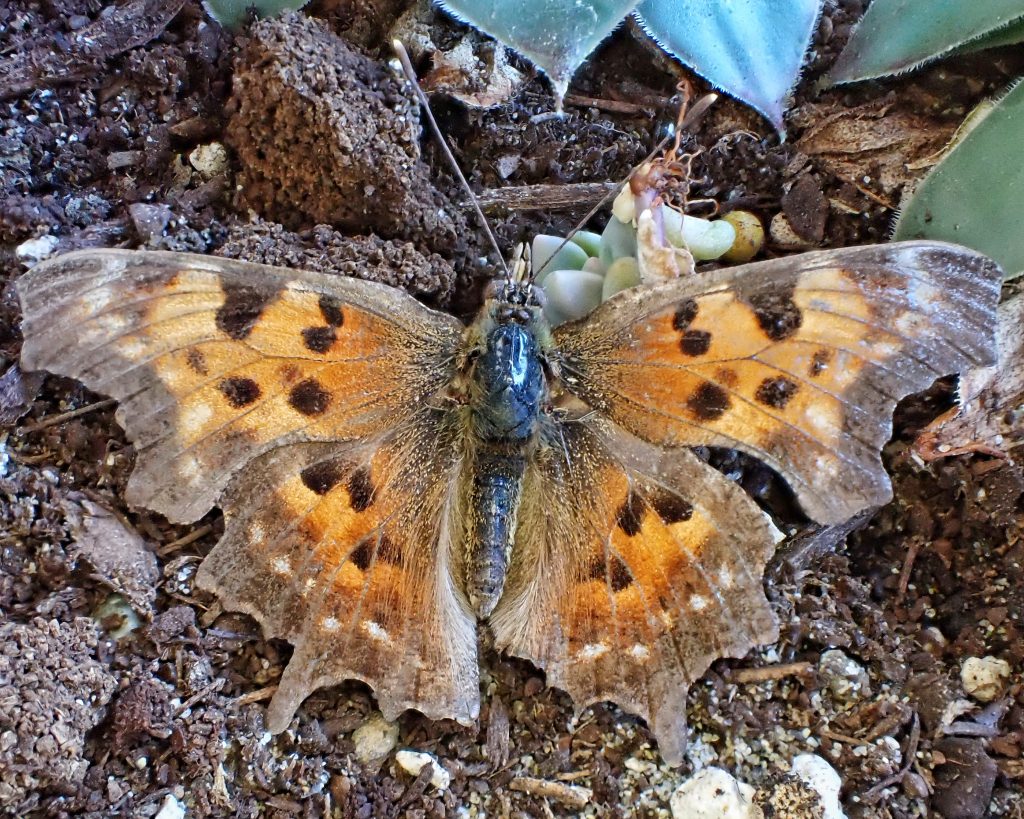
I love the members of the butterfly family Nymphalidae, but I struggle with identification of its species. This is particularly true for the fritillaries and checkerspots, but the commas are no cakewalk for me either. This is because not only do many Nymphalidae have very ‘busy’ patterns on their wings, but because of variation within species, you usually need to see both sides of the wing for a positive identification.
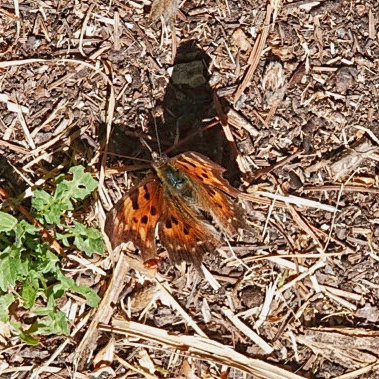
Those of you who practice the sport of butterfly photography know as well as I do how hard it can be to get both ventral and dorsal shots of a butterfly. Often, but fortunately not always, open wings stay open, and closed wings stay closed. And the task is further complicated by the fact that the optimal spot for photographing open wings is behind the butterfly, while the best angle for good, diagnostic shots of the ventral side of the wings is lateral to the bug.
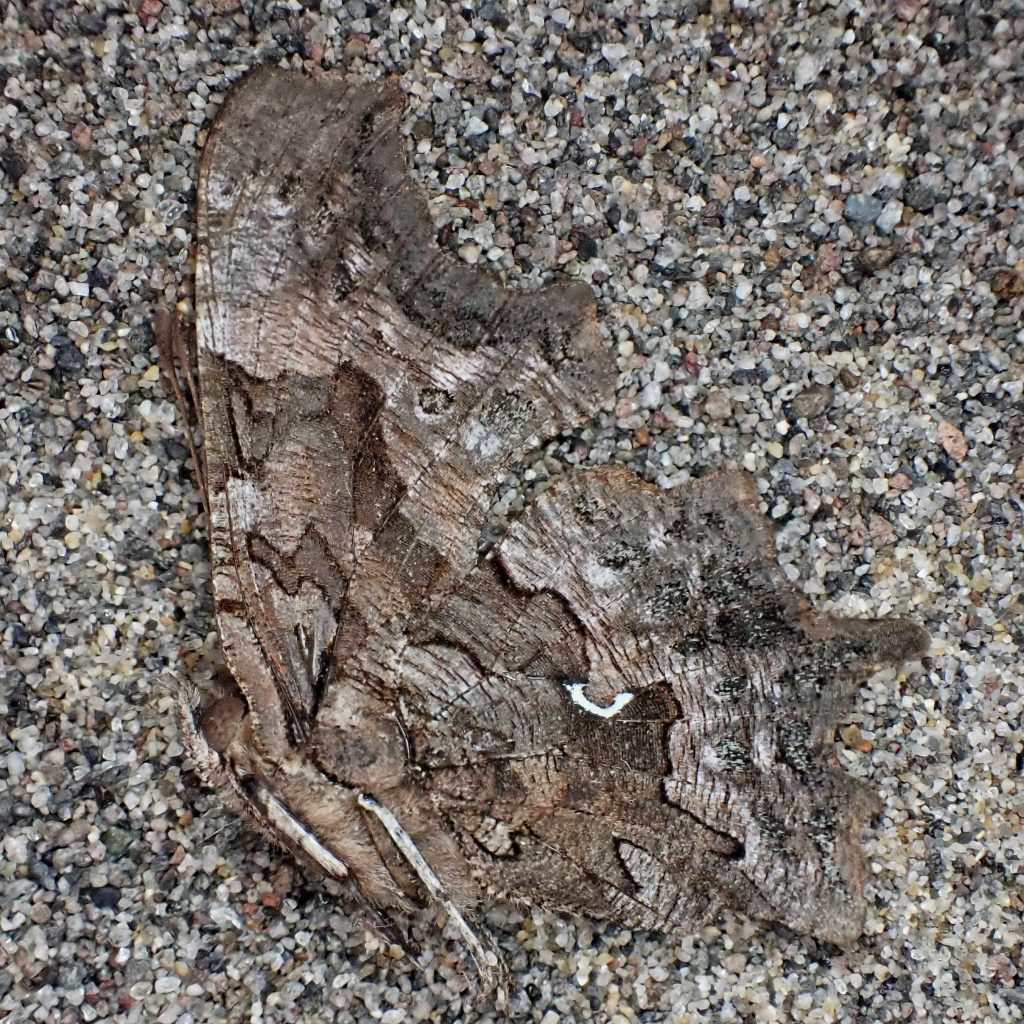
Combine all of this with how flighty and fast commas tend to be and you will understand why, as soon as it clicked in my brain that it was a Polygonia sp. in my viewfinder, I put down the camera and grabbed my net. I captured it successfully, put the container in the coolest, darkest part of my pack, and went on my way. When I was back home I put it in the fridge to ‘chill out’, and went to have dinner with my wife, after which I placed it on my photography stage. But it was a little to chilled, and wouldn’t stand upright, so I snapped a few ventral shots and put a lid over it. A few minutes later I noticed it was upright, with wings spread, so I removed the cover, snapped one photo, and it promptly flew off and disappeared into the jumbled mess of my study/lab.
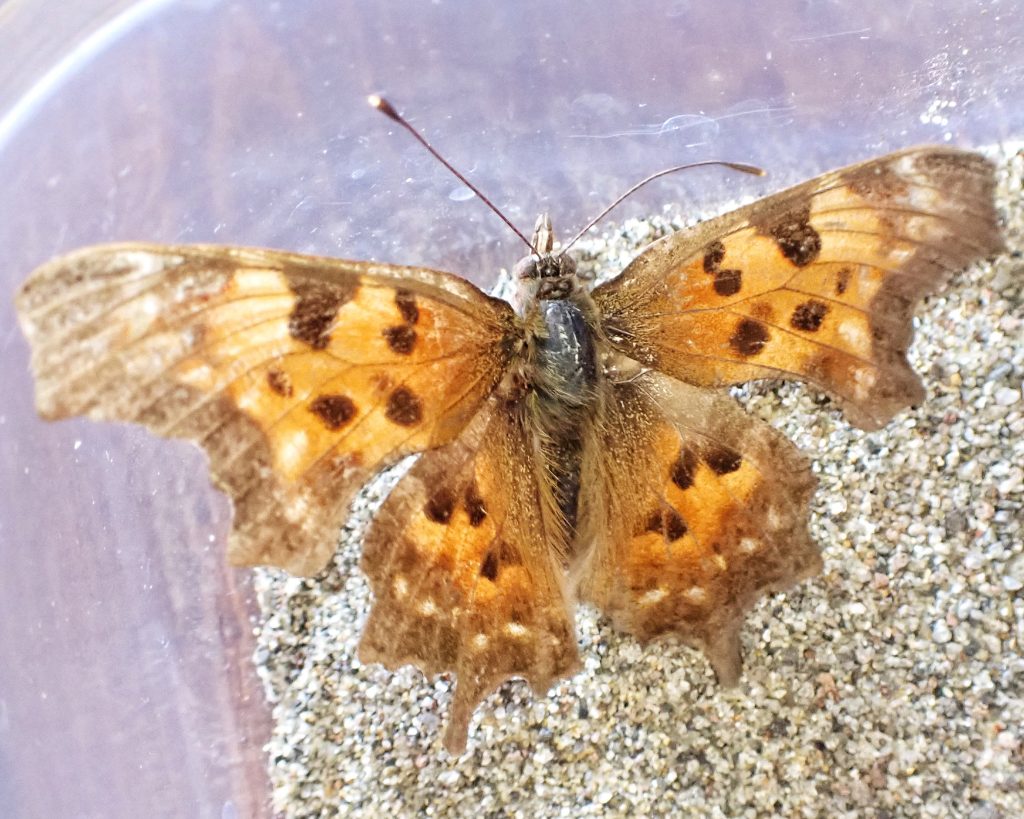
I was bummed out. I didn’t think I had enough for a positive id, and I was afraid that after the trauma of the day this butterfly would end up dying of dehydration. I am in no way opposed to killing an occasional insect for identification purposes, or even as part of a collection. But I am opposed to me causing the death of a life form simply through my incompetence. I combed through the lab to no avail, but there are many hidey-holes that cannot be accessed without moving hundreds of pounds of books and equipment.
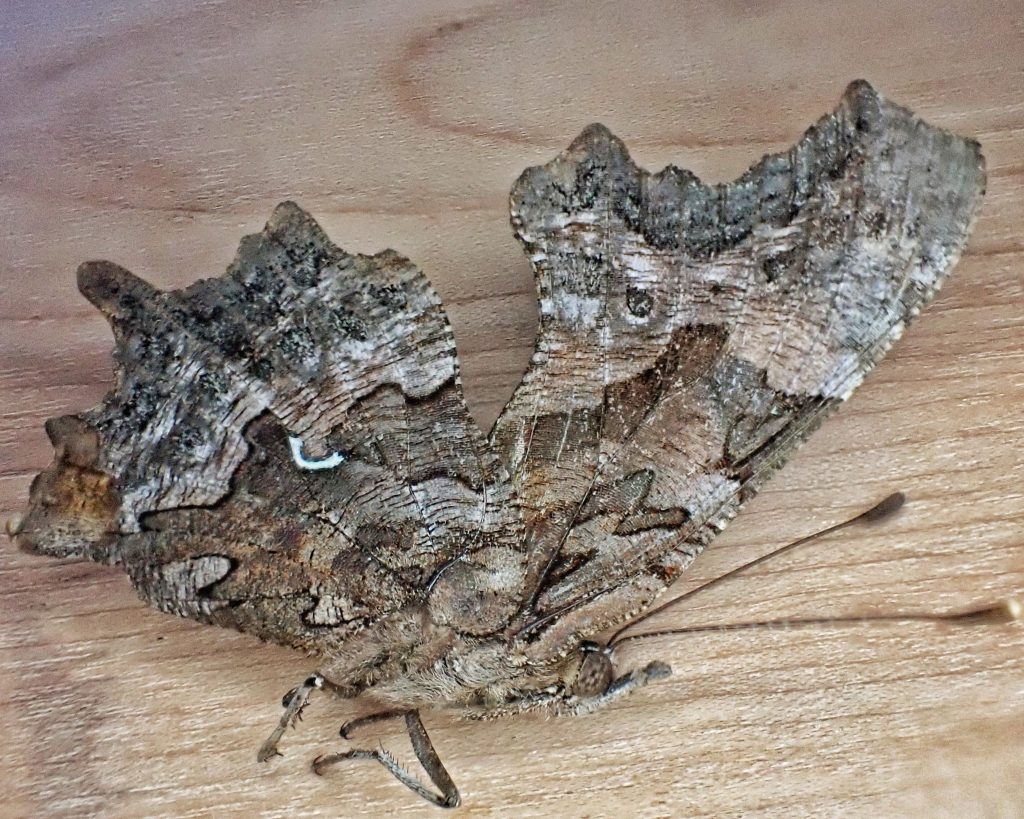
By the following afternoon I’d pretty much given up hope of finding it, although I still kept an eye out, and pulled back the curtains every time I walked past a window. I sent off my few, poor photos and a tentative identification, and moved on to the next project. And then, about 2pm, I spotted it perched with open wings on a window screen. The light was terrible, but with great relief I snapped a couple of dozen shots, recaptured it and placed it on my stage, where it cooperated long enough for some nice ventral shots.
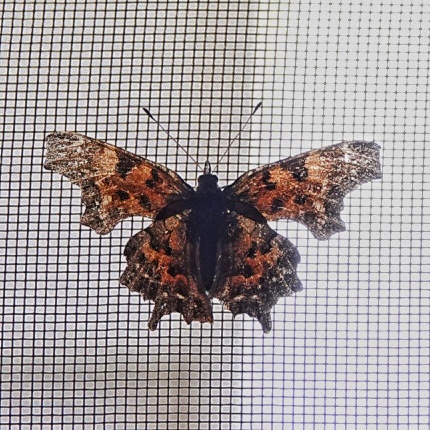
I put it back in the fridge with a little water while I processed the photos to see if they seemed diagnostic. While doing so I recieved a reply from Norbert Kondla who confirmed, despite my lousy photos and due to his wealth of experience and expertise, that I was indeed in possession of Polygonia faunus. So I promptly released my prisoner into one of Pam’s outdoor flower pots, where, after a minute of warming, it proceeded to pose prettily, with wings spread, for the space of a minute or so, before flying off.
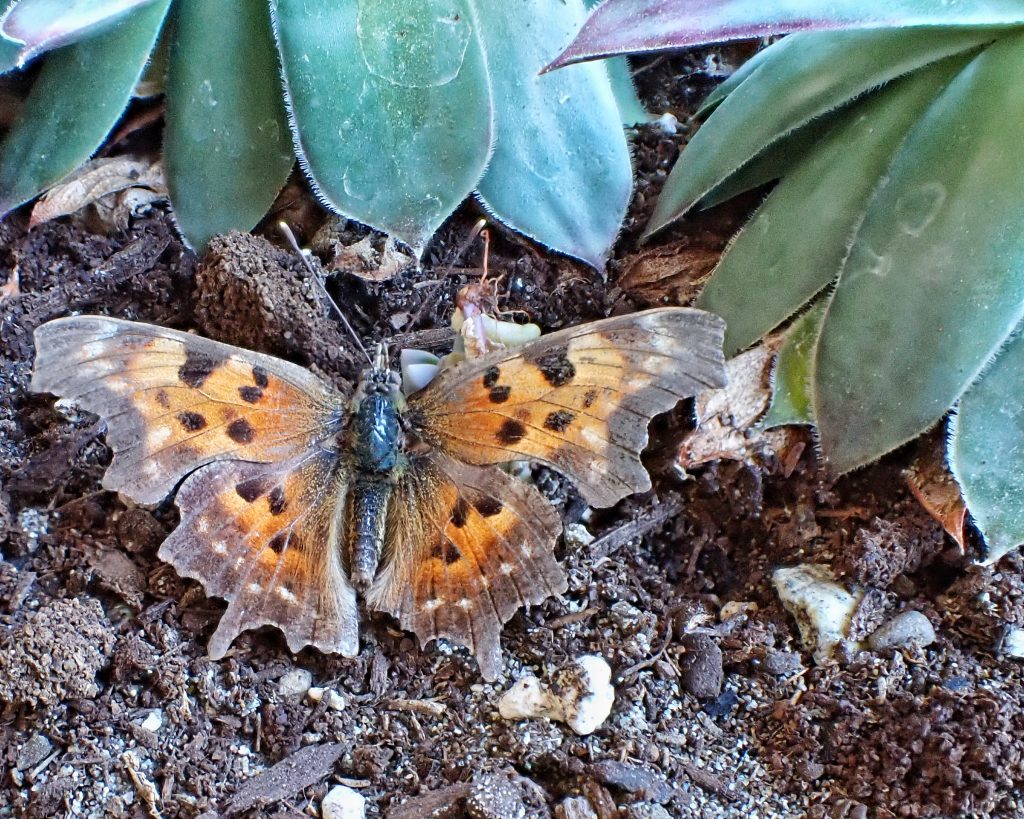
The Green Comma is a highly variable species, and several varieties and subspecies have been named, but most of those have proven to be spurious. On the other hand they are very similar to the Eurasian species Polygonia c-album (Comma), which occupies similar habitats, and some molecular biology has indicated that they may be the same species. So, because it is the older name, it is possible that someday our Green Commas will be known as Polygonia c-album ssp. faunus.
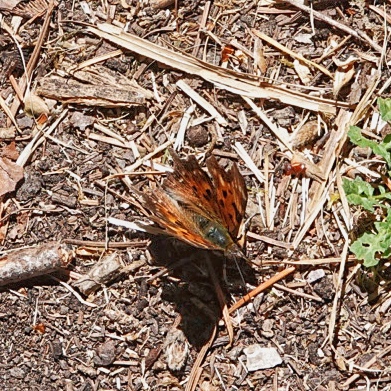
Description-Large (ws up to 46mm) (although on average the smallest Polygonia in our region) orange, brown, and black butterfly, with light yellow submarginal spots and very ragged wing margins; ventral wing surfaces mottled brown and grey with the eponymous whitish comma, although reduced in females, and a row of blue green submarginal spots.
Similar species– Hoary Comma (P. gracilis) is larger, with dorsal submarginal spots larger, more diffuse, and overwhelming hindwing border, and chartreuse spots, rather than blue green, on the ventral surface; Oreas Anglewing (P. oreas) more ragged on wing margins, and usually with thin yellow wing borders that enhance the ragged look, and dark grey to black ventral wing surface with a V-shaped comma; Satyr Anglewing (P. satyrus) is larger, with larger and less defined submarginal spots and a thin wing border which doesn’t contain the spots, and more contrast on the ventral wing surfaces.
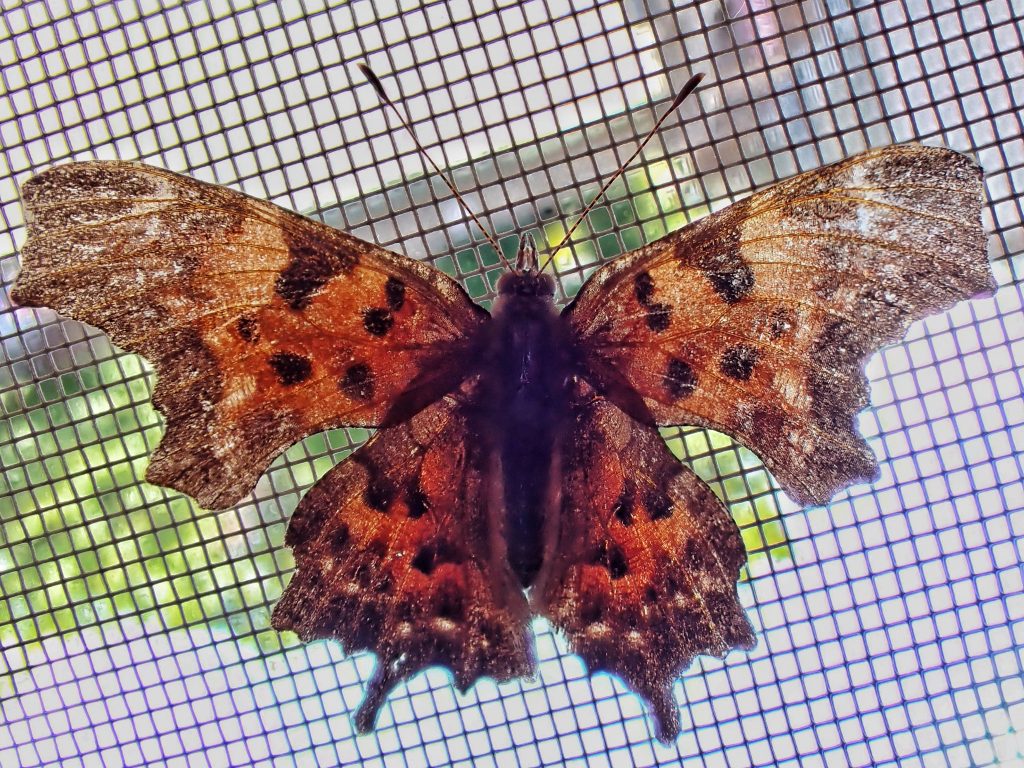
Habitat-Forest and woodland openings and edges at all elevations.
Range-Nearctic North America south of the tundra; region wide except for the most arid interior regions, and along the coast Washington and nw Oregon.
Eats-Larval hosts are mostly willows, alder, birch, aspen, and some native rhododendrons; adults eat sap (especially willow sap in springtime), feces of berry eaters, aphid honeydew, fallen fruit, and nectar at asters, mountain ash, and other flowers; frequent at puddles and mud.
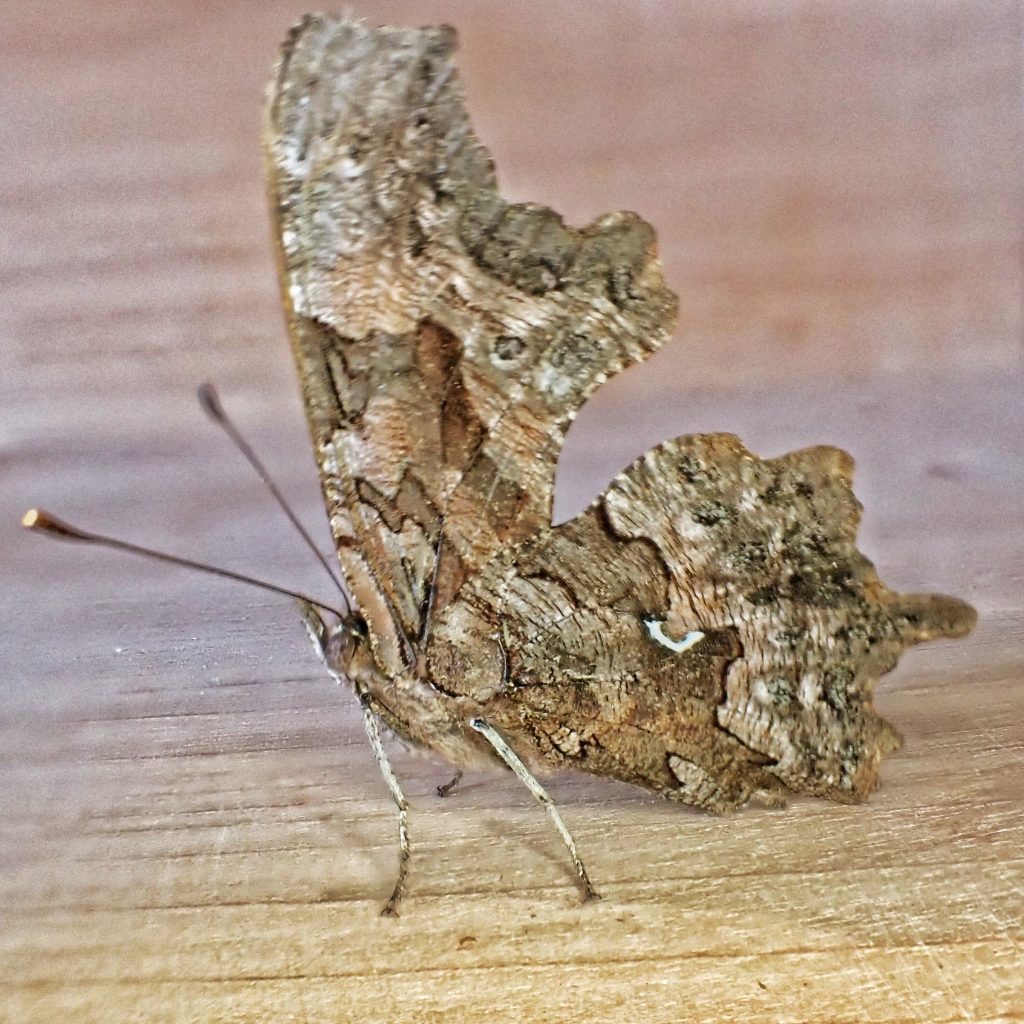
Reproduction-Univoltine in our region; eggs are laid on the top of the leaves of host plants in midspring and hatch in about a week; larvae pupate in early summer, and adults eclose in mid summer; adults may aestivate until fall; after feeding heavily in the fall the adults hibernate through the winter, and emerge in early spring to mate.
Adults active-From February through September, with peaks in April-May, and in August.
Etymology of names–Polygonia is from the Greek for ‘many angles’, and refers to the irregular, ragged or scalloped wing margins of members of this genus. This is also why they are called anglewings. The specific epithet faunus refers to a figure in Greek mythology, the woodland deity Faunus, and references the forested haunts of these butterflies. The common name comma refers to the white, comma shaped mark on the underside of the hindwings
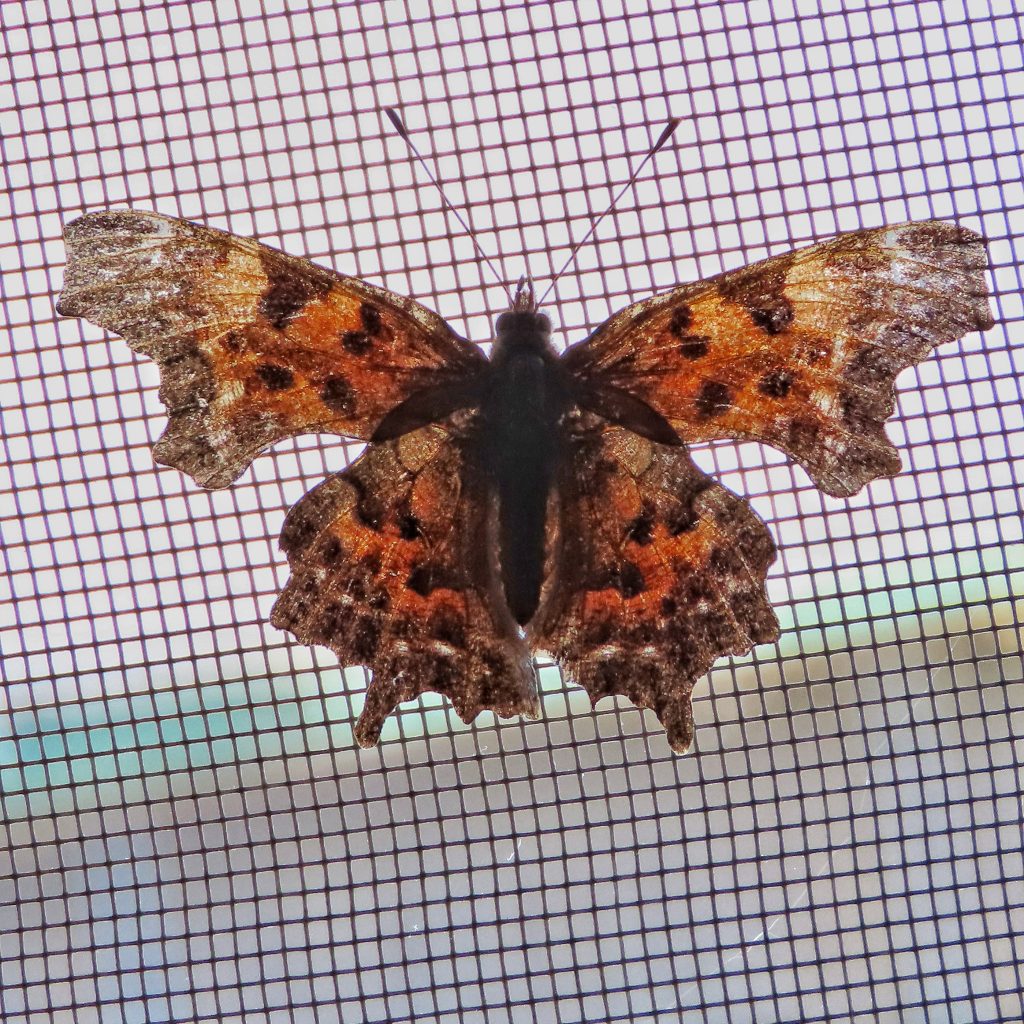
https://www.butterfliesandmoths.org/species/Polygonia-faunus
https://linnet.geog.ubc.ca/efauna/Atlas/Atlas.aspx?sciname=Polygonia%20faunus
https://bugguide.net/node/view/12875
https://butterfly.ucdavis.edu/butterfly/polygonia/faunus
https://digitalatlas.cose.isu.edu/bio/insects/butrfly/famnymph/pofa.htm
https://en.m.wikipedia.org/wiki/Faunus
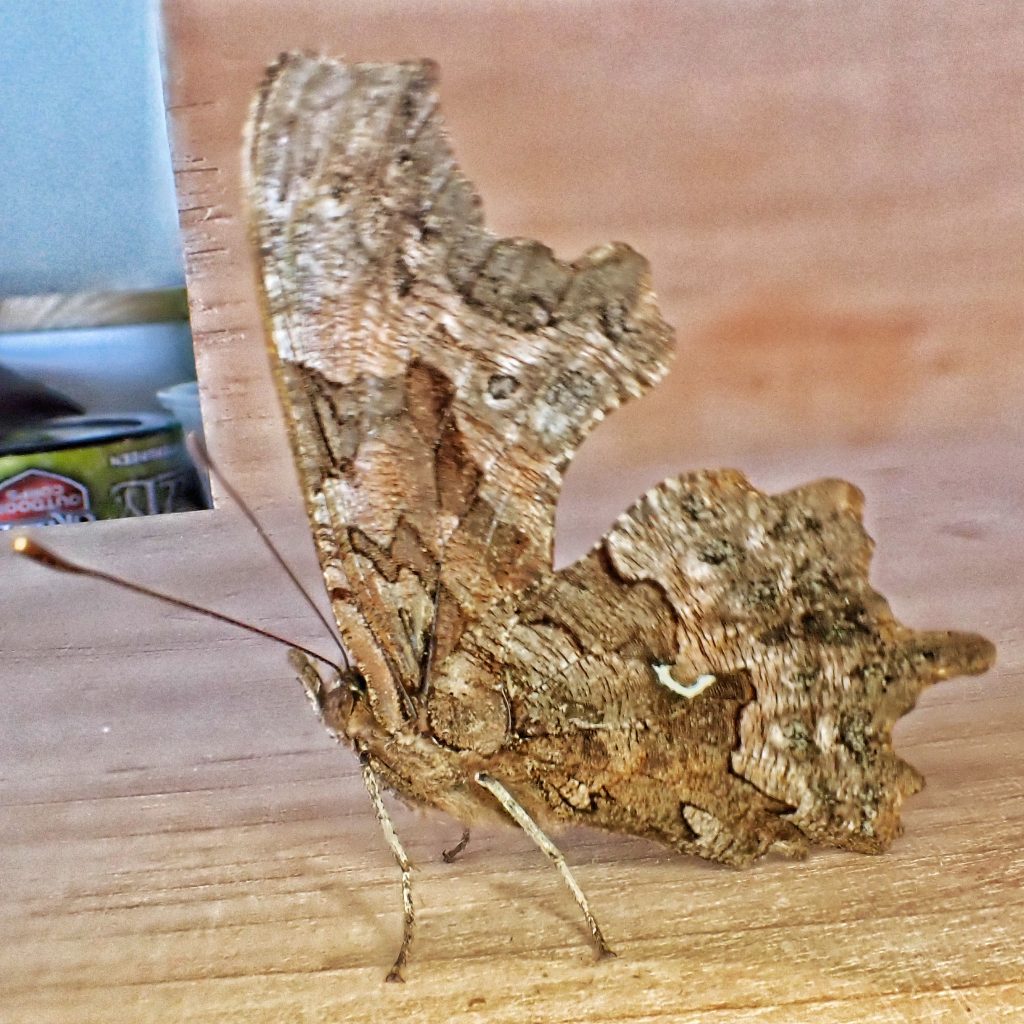
Great photos today. Thanks as always
Thank you for the appreciation!
And for some reason I confidently thought that I had correctly identified some Commas. I sincerely doubt it now!
Thanks Dan 😉
Green commas are a beautiful butterfly, one of the first of the season here in Western Montana. Thank you for this full description and wonderful set of notes.
Thank you for your appreciation!
Very fun to read! Great pictures! Especially the one in the flower pot! ☺️